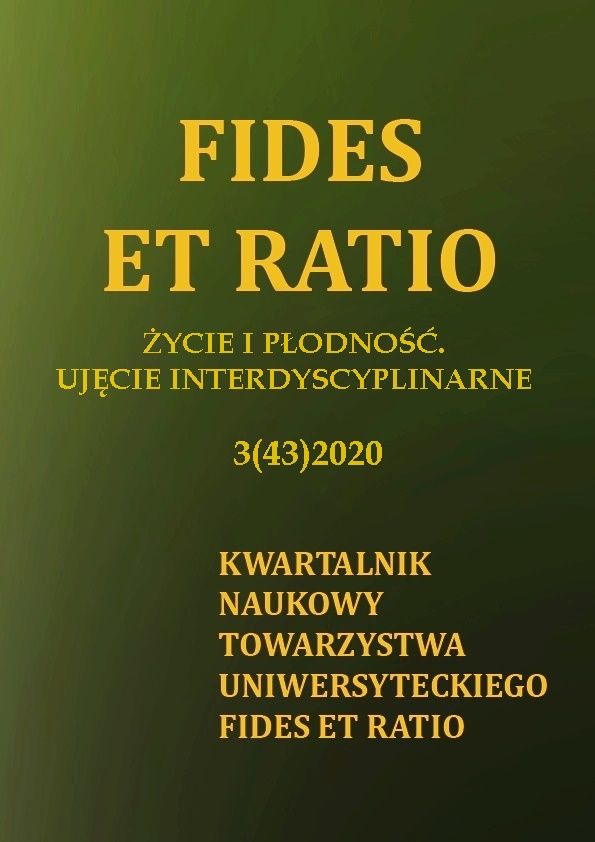Abstract
One of the important factors affecting the health of a child aged 1-6 is the amount and quality of microbiota, i.e. the presence of many species of bacteria, fungi, archaea and viruses in the body. They colonize the body of the new-born baby during childbirth, and breastfeeding, when a baby is exposed to the natural environment, and at a later age when he/she consumes food, especially of lactic fermentation origin. The use of medications, i.e. antibiotics or steroids, impoverishes the biodiversity of a child’s microbiome. Therefore, consumption of probiotics by children aged 1-6 can improve the quality of their microbiota and thus help in the treatment of gastrointestinal ailments
References
Bartnicka, A., Gałęcka, M., Mazela, J. (2016). The impact of perinatal and postnatal factors on composition of the intestinal mikrobiota in infants, Standardy Medyczne, Pediatria, 13, 165-172.
Cox, L.M., Blaser, J.M. (2015). Antibiotics in early life and obesity, Nature Reviews Endocrinology, 11 (3), 182-190.
Czerwionka-Szaflarska, M., Romańczuk, B. (2010). Probiotics for the prevention and treatment of selected gastrointestinal disorders in children, Forum Medycyny Rodzinnej, 4 (2), 135-140.
FAO/WHO. (2001). Health and Nutritional Properties of Probiotics in Food including Powder Milk with Live Lactic Acid Bacteria. Report of a Joint FAO/WHO Expert Consultation on Evaluation of Health and Nutritional Properties of Probiotics in Food Including Powder Milk with Live Lactic Acid Bacteria.
Gałęcka, M., Bartnicka, A., Szewc, M., Mazela, J. (2016). Kształtowanie się mikrobioty jelitowej u niemowląt warunkiem zachowania zdrowia, Standardy Medyczne, Pediatria, 13, 359-36.
Gregorczyk-Maślanka, K., Kurzawa, R. (2016). Mikrobiota organizmu ludzkiego i jej wpływ na homeostazę immunologiczną – część I, Alergia Astma Immunologia, 21, 146–150.
Hill, C., Guarner, F., Reid, G., Gibson, G.R., Merenstein, D., Pot, B., Morelli, L., Canani,
R.B., Flint, H., Salminen, S., Calder, P.C., Sanders, M.E. (2014). The International Scientific Association for Probiotics and Prebiotics consensus statement on the scope and appropriate use of the term probiotic, Nature Reviews Gastroenterology
& Hepatology, 11 (8), 506–514.
Jańczewska, I., Domżalska-Popadiuk, I. (2014). Znaczenie kolonizacji bakteryjnej przewodu pokarmowego noworodków donoszonych urodzonych drogą cięcia cesarskiego. Annales Academial. Medicae Gedanensis, 44, 99–104.
Jarosz, M., Chabros, E., Charzewska, J., Chwojnowska, Z., Mojska, H., Ołtarzewski,
M., Rogalska-Niedźwiedź, M., Rychlik, E., Szponar, L., Traczyk, I., Wajszczyk,
B., Walkiewicz, A., Wierzejska, R., Wolnicka, K. (2008). Zasady prawidłowego żywienia dzieci i młodzieży oraz wskazówki dotyczące zdrowego stylu życia, Warszawa: IŻŻ.
Jaworski, A., Dudek, K., Jurczak, I. (2016). Structure and functional capacity of the bacterial human gastrointestinal microbiota in healthy state and variety of disease states, Journal of Health Study and Medicine, 4, 37-61.
Kamińska, E. (2012). Effectiveness and safety of probiotics in children on the basis of clinical trials, Medycyna Wieku Rozwojowego, 16 (3), 240-251.
Klaenhammer, T.R. (2000). Probiotic bacteria: today and tomorrow, Journal of Nutrition, 130 (2), 415-416.
Kubiszewska, I., Januszewska, M., Rybka, J., Gackowska, L. (2014). Lactic acid bacteria and health: are probiotics safe for human? Postepy Higieny i Medycyny Doświadczalnej, 68, 1325-1334.
Lewis, MC., Patel, DV., Fowler, J. (2013). Dietary supplementation with Bifidobacterium lactis NCC2818 from weaning reduces local immunoglobulin production in lym-phoid-associated tissues but increases systemic antibodies in healthy neonates, British Journal of Nutrition, 110, 1243-52.
Litwińczuk, A., Banciarowska, S. (2016). Probiotics in the prevention and therapy in children in parents’ opinion, Annales UMCS Sect. EE, 34 (4), 11–18.
Magnusson, M., Lagerberg, D., Wallby, T. (2016). No widening socioeconomic gap within a general decline in Swedish breastfeeding. Child: Care, Health and Development, 42, 415–423.
Matsuyama, M., Gomez-Arango, L.F., Fukuma, N.M., Morrison, M., Davies, P.S.W., Hill,
R.J. Breastfeeding: a key modulator of gut microbiota characteristics in late infancy, Journal of Developmental Origins Health and Disease, 19, 1-8.
Nowak, A., Libudzisz, Z. (2008). The intestinal microbiota of humans, Standardy Medyczne, Pediatria, 5, 372-379.
Nowak, A., Śliżewska, K., Libudzisz, Z. (2010). Probiotyki – historia i mechanizmy działania, Żywność Nauka Technologia Jakość, 4 (71), 5-19.
Plaza-Diaz, J., Ruiz-Ojeda, F.J., Gil-Campos, M., Gil, A. (2018). Immune-Mediated Mechanisms of Action of Probiotics and Symbiotic in Treating Pediatric Intestinal Diseases, Nutrients, 10 (1), 42.
Rakowska, M., Lichosik, M., Kacik, J., i in. (2016). The impact of the microbiota on human health, Pediatria i Medycyna Rodzinna, 12 (4), 404-412.
Szałek, E., Kaczmarek, Z., Grześkowiak, E. (2010) Wykorzystanie probiotyków we współczesnej farmakoterapii pediatrycznej, Farmakologia Polska, 66 (3), 168-172.
Szajewska, H. (2008), Probiotics in pediatrics. Standardy Medyczne, Pediatria, 5, 380-392.
Szajewska, H., Kołodziej, M. (2015). Systematic review with meta-analysis: Saccharomyces boulardii in the prevention of antibiotic-associated diarrhea, Alimentary Pharmacology & Therapeutics, 42 (7), 793–801.
Strzępa, A., Szczepanik, M.(2013). Influence of natural gut flora on immune response, Postępy Higieny i Medycyny Doświadczalnej, 67, 908-920.
Szymankiewicz, M. (2014) Mikrobiota jelitowa a żywienie noworodków urodzonych drogą cięcia cesarskiego, Standardy Medyczne, Pediatria, 11, 97-101.
Urbańska, M., Gieruszczak-Białek, D., Szajewska, H. (2016). Systematic review with meta-analysis: Lactobacillus reuteri DSM 17938 for diarrhoeal diseases in children, Alimentary Pharmacology & Therapeutics, 43 (10), 1025–1034.
Węgielska, I., Suliburska, J. (2016). The influence of drugs on intestinal mikrobiota, Forum Zaburzeń Metabolicznych, 7 (1), 1-7.
Witkowska–Wirstlein, R., Jurczyk, M.U. (2016). Czynniki determinujące kolonizację przewodu pokarmowego noworodka, Polski Przegląd Nauk o Zdrowiu, 3 (48), 285-289.
Zaręba, D. Ziarno, M., Hauzer, A. (2018). Postawa młodych konsumentów wobec produktów mlecznych i probiotyków, Bromatologia Chemia. Toksykologia, 42 (3), 954–958.
Zielińska, D., Kołożyn-Krajewska, D. (2018). Food-Origin Lactic Acid Bacteria May Exhibit Probiotic Properties: Review, BioMed Research International, 5063185.

